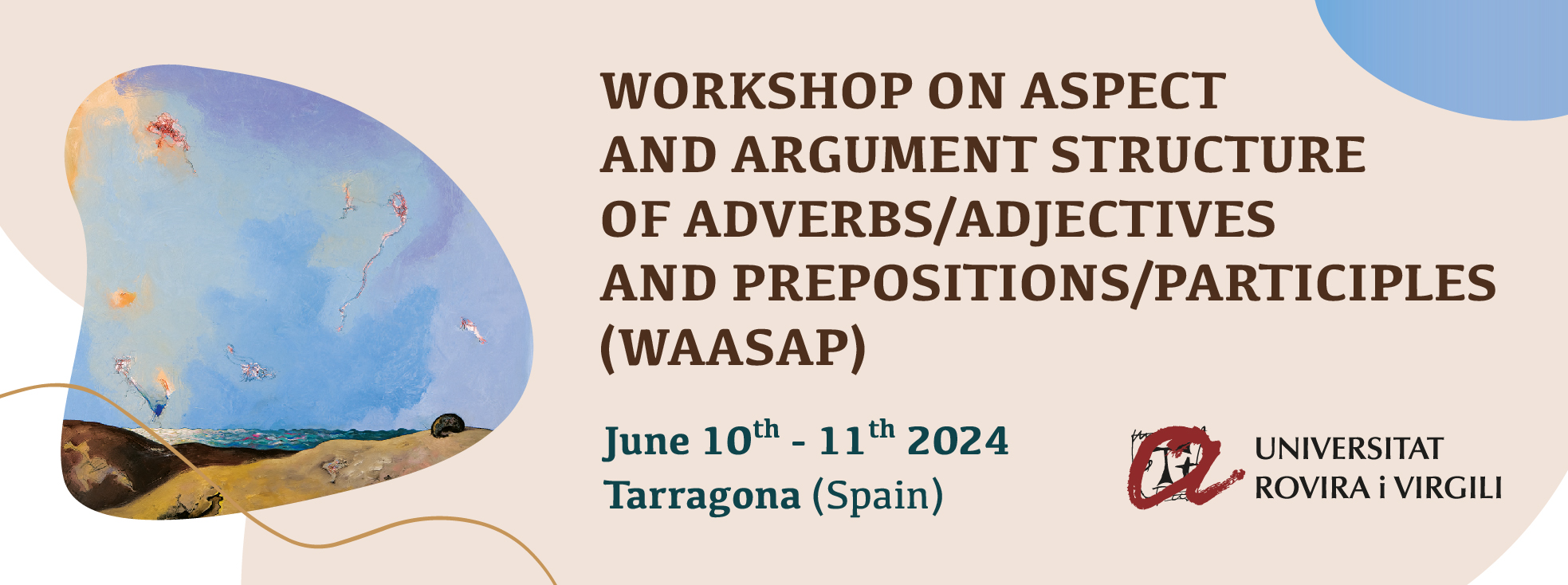Call for Papers
WAASAP welcomes research on the aspectual and argument structure of nonverbal categories, with a focus on adjectives, participles, prepositions and adverbs. The questions we are interested in, but are not restricted to, this year are the following:
(i) What syntactic and semantic parallelisms can be found between the structure of prepositions and the structure of adjectives? To what extent are adjectives based on a prepositional structure? Is this structure maintained cross-linguistically?
(ii) What is the functional structure of adjectives and participles? What are the parallelisms between them? To what extent can one state that adjectives and participles contain a preposition as part of their structure, and, if so, what functional role does this prepositional element play in the structure and interpretation of participles? Is this structure shared by other categories (gerunds, adverbs, etc.)?
(iii) How does aspectual information emerge compositionally in syntactic combinations of verbs and their selected prepositions, i.e. in prepositional verbs? How does prepositional selection work, and what factors are involved in it? What is the syntactic contribution of the preposition to the predicate and how does the preposition affect the aspectual and eventive properties of the predicate? What is the status and internal syntax of the prepositional constituent, whether selected or unselected (e.g. in atransitive structures)? Are prepositional objects arguments or adjuncts of the verb? Are they arguments of an underlying nominal in unergative structures or selected by a root? More generally, how do (un)selected PPs get integrated into the event structure of different types of verbs and deverbal categories (adjectives and participles)?
(iv) What is the relation between prefixes and prepositions? Do prefixed verbs select a specific type of preposition? If so, what determines this selection, and what is the relationship between the prefix and the preposition?
(v) Can concepts like ‘path’, ‘location’, ‘central and non-central coincidence’ be applied to the analysis of non-verbal categories beyond prepositions (participles, adverbs)?
(vi) What are the syntactic primitives of adverbial expressions? Is the structure of adverbs similar to the structure of prepositions? And to other categories? Do adverbs select arguments? If so, what interpretation do these arguments have?
(vii) How does the analysis of adjectives, participles, prepositions, and adverbs contribute to the broader understanding of linguistic aspect and argument structure?
Submission instructions:
We welcome submissions for 40 minute talks (30+10) in English. Abstracts should not be longer than two pages (Times New Roman 12 pt., single space, 2.54 cm margins), and should be submitted via easyabs. Submissions are restricted to a maximum of one single-authored submission and one joint submission per author, or two joint submissions.
Deadline for abstract submission: 29th of February 2024 - Extended deadline: March 7th, 2024.
Notification of acceptance: 1st of April 2024
Submissions open: Jan. 13, 2024 - Feb. 29, 2024
Abstract review period: March 2, 2024 - March 29, 2024

